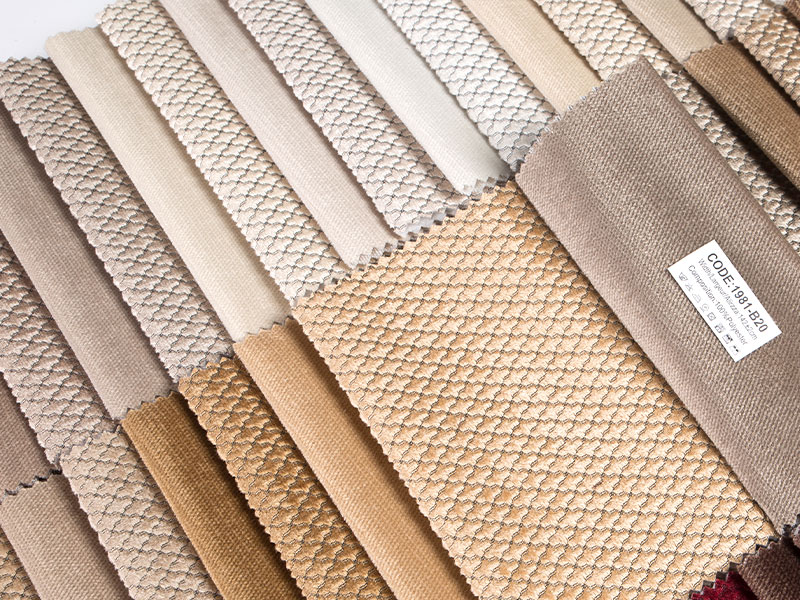When selecting a sofa, the fabric is a crucial factor. It not only affects the overall aesthetic but also directly impacts comfort, durability, and daily maintenance. The market offers a wide variety of sofa textiles, from natural fibers to synthetic materials, each with unique pros and cons.
Natural Fiber Fabrics
Natural fibers are popular for their skin-friendly, breathable, and eco-friendly properties.
-
Cotton: Cotton sofa fabric is soft, breathable, and comfortable to the touch, making it a top choice for many homes. It’s easy to dye, offering a rich selection of colors and patterns. However, cotton is prone to wrinkling and fading and isn't very stain-resistant. For homes with children or pets, you might want to consider specially treated cotton or a more durable alternative.
-
Linen: Linen is an incredibly durable natural fiber with a unique texture and luster. It's highly breathable, making it perfect for hot and humid climates. The downside is that linen wrinkles easily and has a relatively stiff texture. Over time, linen softens and develops a beautiful, unique aged look.
-
Wool: Wool sofa upholstery is exceptionally durable and resilient, resisting wrinkles. It's naturally stain-resistant and flame-retardant, and it stays warm in winter and cool in summer. However, wool is typically more expensive and may cause irritation for some people with sensitive skin.
-
Leather: Leather is a luxurious and extremely durable upholstery material. It develops a unique patina with use, gaining more character over time. Leather is easy to clean and naturally hypoallergenic. But it is expensive and can be easily scratched by sharp objects.
Synthetic Fiber Fabrics
Synthetic fibers are popular due to their excellent performance and relatively low cost.
-
Polyester: Polyester is the most widely used synthetic sofa textile. It offers excellent durability, wrinkle resistance, and fade resistance, all at an affordable price. Polyester is often blended with other fibers to enhance the fabric's strength and feel.
-
Nylon: Nylon is one of the strongest synthetic fibers, with outstanding abrasion resistance. It's often blended with other fibers to improve the upholstery fabric's durability, making it ideal for high-traffic areas.
-
Polypropylene: Polypropylene is known for its excellent stain resistance, fade resistance, and durability. It doesn't absorb water, making it very easy to clean. Polypropylene sofa covering is an ideal choice for busy households.
-
Rayon: Rayon mimics the texture of natural fibers, offering a silky luster and soft feel. However, its durability and wrinkle resistance are not as good as other synthetic fibers, so it's typically blended with more durable materials.

Blended Fabrics
Blended fabrics combine the advantages of different fibers to achieve a balance of performance and aesthetics. For example, a cotton-polyester blend retains the softness and breathability of cotton while adding the durability and wrinkle resistance of polyester. This type of sofa fabric is very common in the market, providing consumers with more versatile options.
How to Choose?
When selecting your sofa material, consider the following factors:
-
Household Members: If you have children or pets, durable and easy-to-clean synthetic fibers like polyester, nylon, or polypropylene are better choices.
-
Usage Frequency: A living room sofa is used more often, so you should choose a durable fabric. For a bedroom or study sofa, you can prioritize a more comfortable feel.
-
Style and Aesthetics: The color, texture, and pattern of the fabric should match your home's decor.
-
Climate: In hot and humid areas, breathable cotton and linen are excellent choices, while in colder climates, warm materials like wool are more popular.


 Language
Language  English
English 中文简体
中文简体 عربى
عربى





















